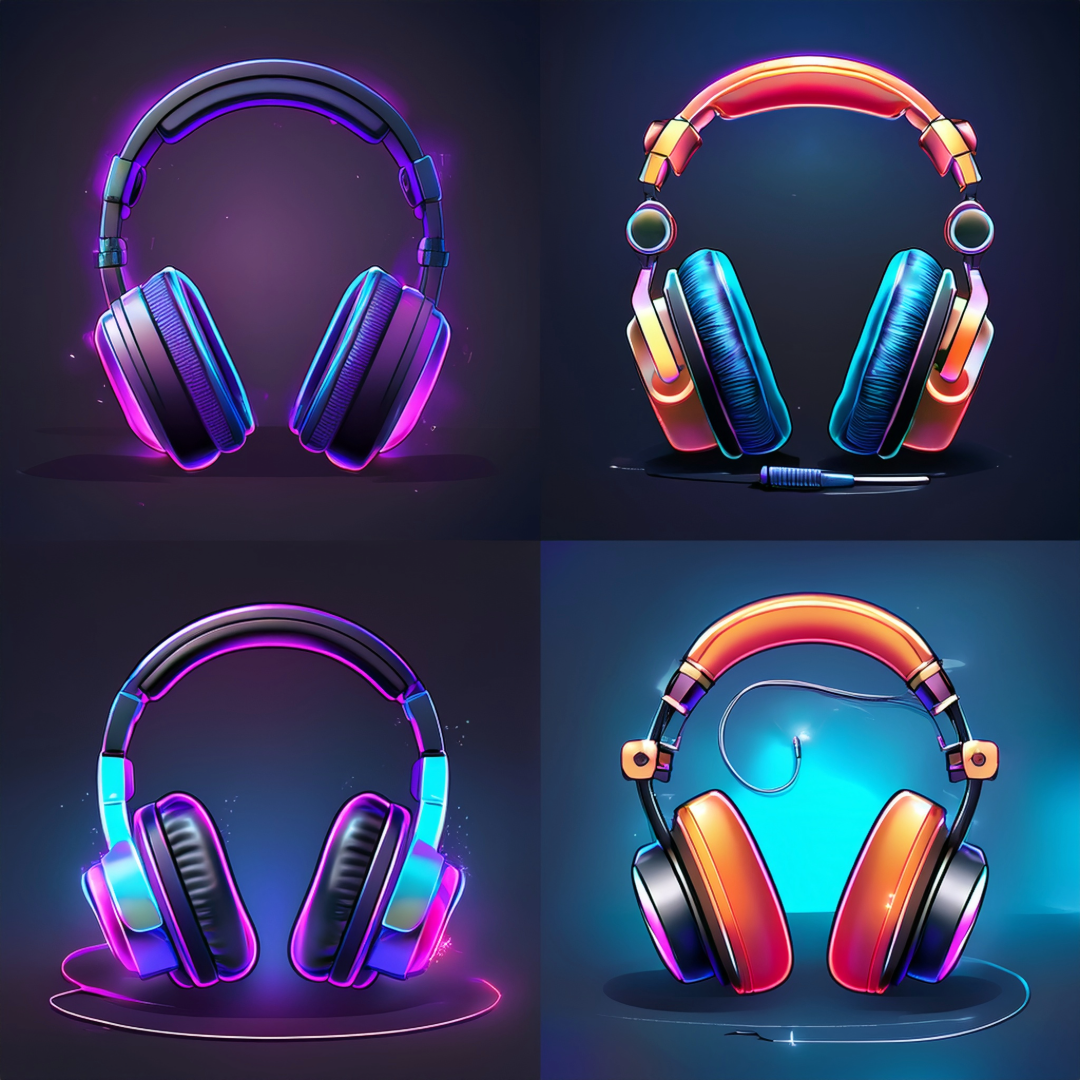The Ultimate Guide to Noise-Canceling Headphones for Extended Gaming and Smart Working
In today’s increasingly noisy world, the ability to concentrate for prolonged periods has become a premium. Whether engaged in intense gaming sessions or demanding smart working tasks, external distractions can significantly hinder performance and immersion. Noise-canceling headphones have emerged as a powerful tool to combat these interruptions, creating a personal oasis of calm that allows for deep focus and enhanced engagement. This guide aims to provide a comprehensive overview of the best noise-canceling headphones for individuals who routinely spend more than six hours a day gaming or working, offering expert recommendations and insights to facilitate an informed purchase decision.
The Power of Silence: How Noise-Canceling Enhances Focus and Productivity
The implementation of noise-canceling technology in headphones offers substantial benefits for both gamers and smart working professionals, primarily by improving concentration and reducing the impact of external disturbances.
Benefits for Gamers: Immersion and Competitive Edge
For gamers, the ability to fully immerse oneself in the virtual world is paramount. Noise-canceling headphones achieve this by effectively blocking out a wide range of ambient sounds, from household noises to conversations, allowing the intricate sound design of games to take center stage. This heightened auditory immersion can significantly enhance the overall gaming experience, making virtual environments feel more realistic and engaging. Furthermore, in competitive gaming, sound cues play a critical role. The ability to clearly hear subtle sounds such as enemy footsteps, approaching vehicles, or in-game communication without the interference of external noise can provide a crucial competitive advantage. Gamers can react more quickly and accurately to auditory information, potentially leading to improved performance and a more enjoyable experience. For individuals with audio sensitivities, the consistent and controlled sound environment offered by ANC headphones can also be beneficial by reducing the overall auditory input and preventing overwhelming sensory experiences. The clarity provided by noise cancellation also amplifies the importance of directional audio, a key feature in many modern games that allows players to pinpoint the location of sounds within the virtual environment. By minimizing external noise, gamers can more easily discern the direction and distance of in-game sounds, leading to improved spatial awareness and a greater understanding of their surroundings.
Benefits for Smart Workers: Concentration and Reduced Distractions
In the realm of smart working, maintaining focus amidst the myriad distractions of a home environment is a significant challenge. Noise-canceling headphones serve as an invaluable tool by creating a dedicated, quiet workspace, effectively minimizing interruptions from family members, pets, household chores, or general ambient noise. This ability to control the auditory environment can lead to a substantial improvement in concentration and productivity, allowing professionals to engage more deeply with their tasks and complete them more efficiently. The constant exposure to disruptive sounds can also contribute to increased stress levels. Noise-canceling headphones help mitigate this by creating a peaceful auditory bubble, reducing unwanted noise and fostering a calmer and more focused work environment, ultimately enhancing overall well-being. While some research suggests that active noise cancellation might not always lead to direct improvements in cognitive performance in all types of office noise scenarios, the subjective feeling of enhanced focus and reduced annoyance caused by background distractions is a significant benefit for individuals engaged in long working hours. Even if raw cognitive output isn’t measurably higher in a controlled setting, the user’s perception of a more tranquil and manageable auditory landscape can lead to a better overall working session. This sense of control over the sound environment is crucial for sustaining concentration and minimizing mental fatigue when working for extended durations.
Comfort is Key: Essential Features for Headphones Used Over 6 Hours
For headphones intended for prolonged use exceeding six hours daily, comfort becomes a paramount consideration. Several key features contribute to a comfortable experience over extended periods.
Earcup Material and Design: Breathability and Pressure Distribution
The material and design of the earcups play a crucial role in the comfort of headphones worn for long durations. Common earcup materials include leather, protein leather, velour, and suede, each with its own advantages and disadvantages. Leather and protein leather often provide a good seal for passive noise cancellation and can contribute to a richer bass response. However, their limited breathability can lead to heat buildup and discomfort over extended periods, especially in warmer environments. For sessions lasting six hours or more, breathable materials like velour and Alcantara are often preferred due to their softness and ability to allow for better airflow, reducing the likelihood of sweat and discomfort. Hybrid options that combine different materials may also offer a compromise. The size and depth of the earcups are equally important. Generously sized and deep earcups ensure that the ears are fully enclosed without pressing against the inner components of the headphones, which can cause fatigue and discomfort, particularly for users with larger ears or those who wear glasses. Sufficient cushioning and a design that distributes pressure evenly around the ear are essential for a comfortable fit during long listening sessions.
Headband Design and Adjustability: Ensuring a Secure and Comfortable Fit
The design of the headband is another critical factor in the overall comfort of headphones intended for extended use. Various headband designs exist, including adjustable, suspension, and padded headbands, each affecting weight distribution and pressure on the head. Adjustable headbands allow users to customize the fit to their head size, while suspension headbands, which often feature a separate, adjustable strap that rests on the top of the head, are praised for their ability to distribute the weight of the headphones more evenly, reducing pressure points. Sufficient padding on the headband is also crucial to prevent discomfort on the crown of the head during prolonged wear. The adjustability of the headband should accommodate a wide range of head sizes and shapes, ensuring a secure yet comfortable fit that doesn’t exert excessive pressure.
Weight and Ergonomics: Minimizing Strain During Long Sessions
The weight of the headphones significantly impacts comfort during extended use. Lightweight designs are crucial for preventing neck strain and overall fatigue that can accumulate over six or more hours of continuous wear. Even seemingly minor differences in weight can become noticeable over long periods. Ergonomic considerations, such as the articulation of the earcups to conform to the shape of the head and the overall fit of the headphones, also contribute to long-term comfort. Headphones that are designed to move with the user and avoid unnecessary pressure points will enhance the experience during marathon gaming or work sessions.
Durability Considerations for Daily, Extended Use
Headphones used daily for extended periods in both gaming and smart working environments need to be built to last. Robust build quality and the use of durable materials are essential to withstand the rigors of daily wear and tear. Potential weak points, such as the hinges connecting the earcups to the headband and the cable connections on wired models, should be carefully considered. Reinforcement in these areas can significantly enhance the longevity of the headphones. User reviews often highlight the material around the hinges as a common point of failure , underscoring the importance of examining the build quality of these specific components when selecting headphones for long-term reliability.
Decoding Noise Cancellation: Active vs. Passive and Their Applications
Noise cancellation in headphones is achieved through two primary methods: passive noise cancellation and active noise cancellation (ANC). Understanding the differences between these technologies and their effectiveness in various scenarios is crucial for choosing the right headphones.
Passive Noise Cancellation: The Role of Physical Isolation
Passive noise cancellation, also known as noise isolation, relies on the physical design and materials of the headphones to block external sounds. This is achieved through the earcups themselves, which act as a barrier, and the materials used in the earpads, which create a seal around the ears. Over-ear headphones, with their earcups that fully enclose the ears, generally offer the best passive noise isolation compared to on-ear or in-ear models. The effectiveness of passive noise cancellation spans a range of frequencies, providing a more natural reduction of ambient noise without requiring any power source.
Active Noise Cancellation (ANC): How Technology Silences the World
Active noise cancellation (ANC) utilizes technology to actively reduce unwanted background noise. This involves the use of tiny microphones built into the headphones that detect ambient sounds. The headphones’ internal circuitry then generates sound waves that are precisely out of phase with the detected noise. When these opposing sound waves meet, they effectively cancel each other out, resulting in a significant reduction in the perceived level of external noise. Different types of ANC technology exist, including feedforward (microphones on the outside of the earcups), feedback (microphones inside the earcups), and hybrid (combining both types). Hybrid ANC often provides the most effective noise cancellation across a wider spectrum of frequencies. Adaptive ANC automatically adjusts the level of noise cancellation based on the surrounding environment, while adjustable ANC allows the user to manually control the amount of noise reduction.
Effectiveness in Different Environments: Home, Office, and Gaming Spaces
The effectiveness of both ANC and passive noise cancellation varies depending on the specific environment. ANC is particularly adept at reducing constant, low-frequency sounds, such as the hum of air conditioning, the rumble of airplane engines, or the drone of traffic, making it beneficial in noisy homes, during travel, and even in some office settings. Passive noise cancellation, on the other hand, is generally more effective at attenuating higher-frequency sounds and sudden, transient noises like conversations or keyboard clicks. In open office environments, where background speech is a common distraction, ANC alone might not completely eliminate the noise. In such cases, headphones that offer a combination of good passive noise isolation through well-sealing earcups and effective ANC may provide the most comprehensive noise reduction.
The Top Contenders: Recommended Noise-Canceling Headphones for Gaming and Smart Working
Selecting the ideal noise-canceling headphones for both gaming and smart working requires careful consideration of various factors, including price point and feature set. Here are some recommendations across different categories:
High-End Options: Premium Features and Performance
For users willing to invest in top-tier performance and features, several high-end noise-canceling headphones stand out. The Bose QuietComfort Ultra Headphones are renowned for their exceptional noise cancellation and comfortable design, making them suitable for both focused work and immersive gaming. The Sony WH-1000XM5 offer a similar level of exceptional ANC, along with excellent sound quality and a comfortable, lightweight design suitable for long wear times. For Apple ecosystem users, the Apple AirPods Max offer premium build quality, excellent ANC, and seamless integration with Apple devices, though they come at a higher price point. For gamers seeking a high-performance wireless option with exceptional battery life, the SteelSeries Arctis Nova Pro Wireless features hot-swappable batteries for uninterrupted use and impressive sound quality. The Dell Alienware Pro Wireless Headset provides a comfortable fit, excellent noise cancellation, and a high-quality microphone, making it suitable for both gaming and professional communication. The Bang & Olufsen Beoplay Portal offers a blend of premium audio, comfort, and effective noise cancellation, appealing to users who prioritize both performance and aesthetics.
Mid-Range Choices: Balancing Quality and Affordability
The mid-range category offers a compelling balance of features and affordability. The Sony WH-CH720N stands out as a budget-friendly option with surprisingly effective ANC and a comfortable, lightweight design. Anker Soundcore Life Q30 and its successor, Q45 , provide excellent noise cancellation and long battery life at a more accessible price point. The HyperX Cloud Alpha Wireless offers exceptional battery life and comfortable earcups, making it a great choice for extended gaming sessions. The JBL Quantum 810 and 910 Wireless provide immersive sound quality and effective noise cancellation, catering to both gaming and multimedia use.
Budget-Friendly Alternatives: Effective Noise Cancellation Without Breaking the Bank
For users on a tighter budget, several headphones offer decent noise cancellation and comfort. The 1More SonoFlow Pro HQ51 delivers effective ANC and good sound quality at a very competitive price. The Razer BlackShark V2 X is a wired option that prioritizes passive noise cancellation and offers significant value for its price, particularly for gaming. The Anker Soundcore Life Q20i provides hybrid active noise cancellation and a comfortable over-ear fit at an affordable cost.
Comparison of Recommended Headphone Models
| Model Name | Price Range | Noise Cancellation Type | Key Comfort Features | Battery Life (ANC On/Off) | Wired/Wireless | Microphone Quality | Best Use Case |
|---|---|---|---|---|---|---|---|
| Bose QuietComfort Ultra | High-End | Active (Hybrid) | Memory foam ear cushions, adjustable headband, lightweight | Up to 24/N/A | Wireless | Excellent for calls | Both |
| Sony WH-1000XM5 | High-End | Active (Hybrid) | Soft earcups, lightweight, comfortable headband | Up to 30/40 | Wireless | Outstanding, AI-powered noise reduction | Both |
| Apple AirPods Max | High-End | Active (Hybrid) | Plush earcups, knit-mesh canopy, adjustable headband | Up to 20/20 | Wireless | Good | Both (Optimized for Apple) |
| SteelSeries Arctis Nova Pro Wireless | High-End | Active (Hybrid) | Leatherette earcups, adjustable suspension band, lightweight | Up to 22/44 (per battery) | Wireless | AI-powered noise-canceling, retractable | Gaming |
| Dell Alienware Pro Wireless Headset | High-End | Active (Hybrid) | Memory foam leatherette earcups, tailored headband, light | Up to 35/70 | Wireless/Wired | AI noise cancellation, detachable boom mic | Both |
| Sony WH-CH720N | Mid-Range | Active (Hybrid) | Lightweight, comfortable earcups and headband | Up to 35/50 | Wireless/Wired | Clear, decent noise cancellation | Smart Working |
| Anker Soundcore Life Q30/Q45 | Mid-Range | Active (Hybrid) | Memory foam earcups, adjustable headband, lightweight | Up to 40/65 | Wireless | AI-enhanced call clarity | Smart Working |
| HyperX Cloud Alpha Wireless | Mid-Range | Passive | Plush memory foam leatherette earcups, durable aluminum frame | Up to 300/300 | Wireless | Detachable noise-canceling mic with LED indicator | Gaming |
| JBL Quantum 910 Wireless | Mid-Range | Active (Hybrid) | Memory foam leatherette earcups, lightweight, comfortable | Up to 39/45 | Wireless/Wired | Flip-up-to-mute boom mic with echo and noise suppression | Gaming |
| 1More SonoFlow Pro HQ51 | Budget | Active (Hybrid) | Comfortable earcups, adjustable headband, lightweight | Up to 50/70 | Wireless/Wired | Clear calls | Smart Working |
| Razer BlackShark V2 X | Budget | Passive | Memory foam ear cushions, lightweight design | N/A | Wired | Noise-canceling mic | Gaming |
| Anker Soundcore Life Q20i | Budget | Active (Hybrid) | Memory foam earcups, adjustable headband, lightweight | Up to 40/60 | Wireless | AI-enhanced call clarity | Smart Working |
Powering Through the Day: Battery Life and Charging Solutions
For individuals spending six or more hours daily using headphones for gaming or smart working, long battery life is an essential feature. Headphones with a battery life of 20 hours or more with active noise cancellation enabled can typically last through an entire workday or a series of extended gaming sessions without requiring a recharge. Some models, like the HyperX Cloud Alpha Wireless, boast an exceptional battery life of up to 300 hours , while the Sennheiser Momentum 4 Wireless offers up to 60 hours of playtime. It’s important to note that battery life can be affected by factors such as ANC usage and the Bluetooth codec being used. Most modern noise-canceling headphones offer convenient charging options, typically via USB-C. Some high-end models also support wireless charging, adding to the convenience. Charging times vary between models, but many offer fast charging capabilities, providing several hours of playback with just a short charging period. For example, the Sony WH-1000XM5 can provide up to 5 hours of playback with just a 10-minute charge. A unique solution for uninterrupted use is found in headphones like the SteelSeries Arctis Nova Pro Wireless, which feature hot-swappable batteries, allowing users to quickly replace a depleted battery with a fully charged one without pausing their activity.
Cutting the Cord or Staying Tethered: Wired vs. Wireless for Gaming and Smart Working
When choosing noise-canceling headphones for extended use, the decision between wired and wireless (Bluetooth) connectivity involves considering the trade-offs between freedom, convenience, latency, and reliability.
Wireless (Bluetooth) Headphones: Freedom and Convenience, but What About Latency?
Wireless headphones offer significant advantages in terms of freedom of movement and a cleaner, untethered setup, making them ideal for users who value mobility during work or while taking breaks from gaming. However, a key concern for gamers, in particular, is latency – the delay between an action and the corresponding audio output. While Bluetooth technology has made considerable advancements in reducing latency, it can still be a factor, especially in fast-paced competitive games. Some wireless headphones utilize specific technologies or codecs, such as aptX Low Latency, to minimize this delay. Additionally, many gaming headsets now employ 2.4GHz wireless connections via a USB dongle, which typically offers lower latency compared to standard Bluetooth.
Wired Headphones: Reliability and Zero Latency, but Limited Mobility
Wired headphones provide a highly reliable connection with virtually zero latency, making them a preferred choice for competitive gamers and individuals engaged in audio-sensitive tasks where any delay is unacceptable. They also eliminate the need to worry about battery life, as they draw power directly from the connected device. The primary disadvantage of wired headphones is the limitation in mobility and the potential for the cable to become tangled or restrictive. For users who prioritize absolute audio fidelity and responsiveness, wired headphones often offer better sound quality for the price compared to wireless alternatives.
What the Users and Experts Say: Real-World Comfort and Performance Insights
User reviews and expert opinions provide valuable insights into the real-world comfort and performance of noise-canceling headphones, especially during extended use.
Analysis of User Reviews for Long-Term Comfort
Analyzing user reviews for popular noise-canceling headphones reveals recurring themes related to long-term comfort. Many users praise models like the Bose QuietComfort series and Sony WH-1000XM series for their plush earcups and lightweight designs, which contribute to comfortable wear for several hours. The headband design is also frequently mentioned, with suspension-style headbands, like those found on the SteelSeries Arctis Nova Pro Wireless , often receiving positive feedback for their even weight distribution. However, some users note that certain materials, such as leatherette, can cause overheating during long sessions , while others prioritize the secure seal that leatherette provides for noise isolation. Earcup size and depth are also important factors, with some users with larger ears finding shallower earcups on models like the Sony WH-1000XM5 less comfortable over extended periods. Weight is consistently highlighted as a crucial element, with lighter headphones generally being preferred for all-day use.
Expert Opinions on Sound Quality and Noise Cancellation Effectiveness
Expert reviews from reputable sources like PCMag, SoundGuys, and TechRadar consistently rank Bose and Sony as leaders in noise cancellation technology. The Bose QuietComfort Ultra and Sony WH-1000XM5 are frequently lauded for their ability to effectively block out a wide range of ambient noises. Sound quality, however, tends to be more subjective. While the AirPods Max are praised for their detailed and balanced audio , some experts note that the Sony WH-1000XM5 offer a more “fun” and energetic sound profile after equalization. For gaming, headsets like the SteelSeries Arctis Nova Pro Wireless and JBL Quantum 910 Wireless receive positive reviews for their immersive soundscapes and clear microphone quality. Expert opinions on microphone quality often highlight the effectiveness of noise-canceling microphones in ensuring clear communication in both gaming and professional settings.
Making the Right Choice: A Guide to Selecting the Best Noise-Canceling Headphones
Choosing the best noise-canceling headphones for extended gaming and smart working depends on a variety of factors, including budget, desired features, and individual priorities.
Considerations Based on Price Point and Feature Set
Users should first determine their budget, as noise-canceling headphones range significantly in price. High-end options typically offer the best noise cancellation, premium comfort, and advanced features, while mid-range and budget-friendly alternatives provide a more cost-effective solution with some trade-offs in performance or build quality. Prioritizing features based on specific needs is also crucial. For example, users who primarily work in noisy environments might prioritize the strength of the ANC, while gamers might place a higher value on low latency and microphone quality. Comfort features, such as earcup material and headband design, should be carefully considered for headphones intended for extended daily use.
Tailoring Recommendations to Specific User Needs
For competitive gamers, low latency is paramount, making wired headphones or wireless headsets with a 2.4GHz connection a preferred choice. Clear and reliable microphone quality is also essential for team communication. In contrast, individuals who primarily need headphones for focused work in noisy environments might prioritize strong active noise cancellation and long-term comfort. Users who frequently switch between gaming and work might find a versatile headset with both Bluetooth and wired connectivity options, along with a microphone that performs well in both scenarios, to be the most suitable. Ultimately, the best noise-canceling headphones are those that best meet the individual’s specific needs and usage patterns.
Conclusion: Investing in Your Focus and Immersion
Investing in a quality pair of noise-canceling headphones can significantly enhance both gaming and smart working experiences, providing the power of silence to improve focus, immersion, and overall productivity. By carefully considering the benefits of noise cancellation, the essential comfort features for extended use, the different types of noise cancellation technology, battery life and charging options, the pros and cons of wired versus wireless connectivity, and the insights from user and expert reviews, individuals can make an informed decision and select the best headphones to meet their specific needs and elevate their daily routines.












Add comment